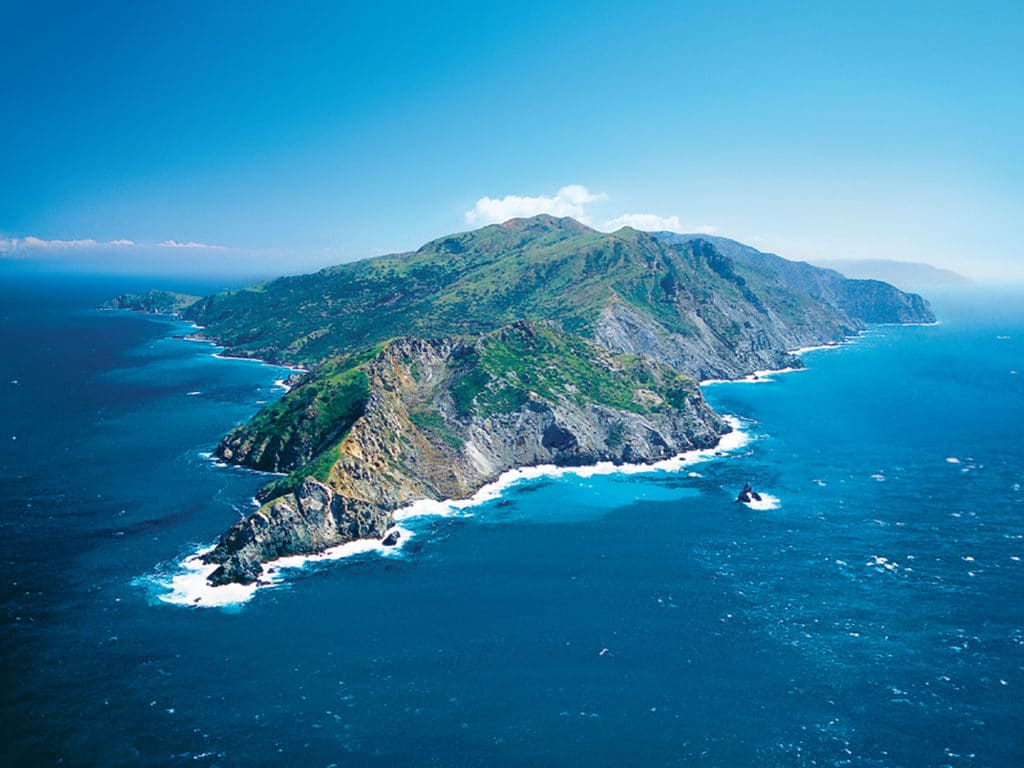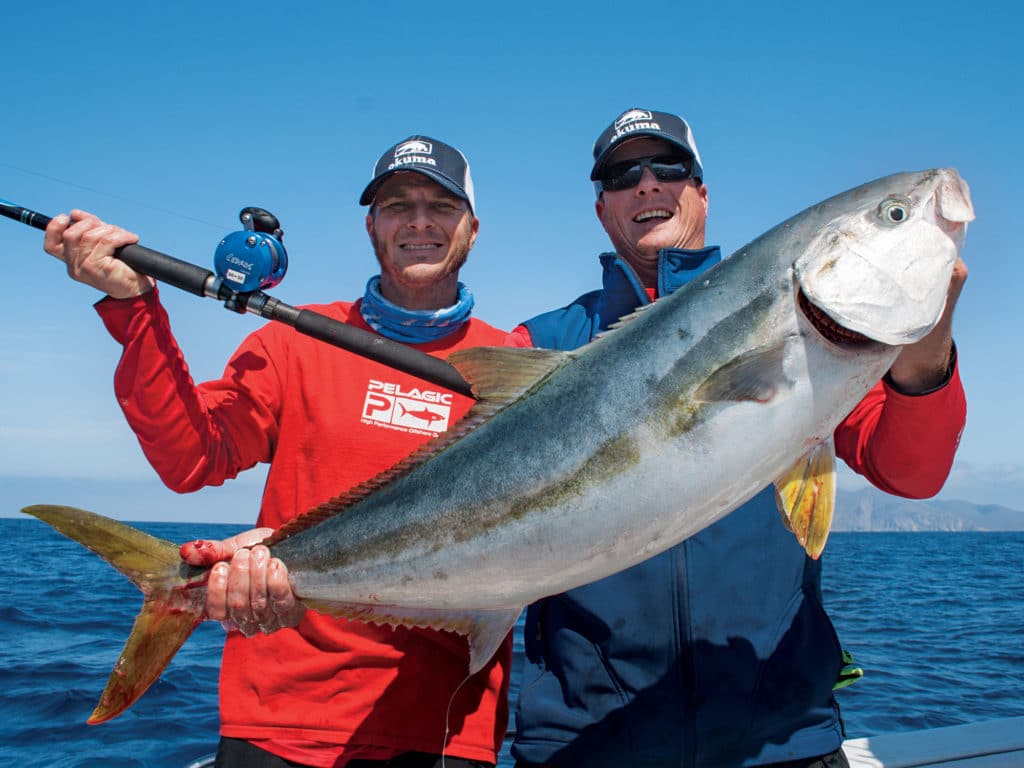
Exciting and challenging game fish
Don’t confuse yellowtail with yellowtail snapper, two completely different species. Yellowtail are a member of the amberjack family and range in size from 5-pound “firecrackers” to 40- and 50-pound “mossbacks” (the state record is more than 63 pounds). Yellowtail love structure, be it wrecks, reefs or kelp beds. It’s the first place they head once hooked, making them one of the toughest species to land along the Pacific’s rocky shores.
Migratory California yellowtail frequent all of Southern California’s islands, but, in recent years, Catalina has hosted the most consistent year-round fishing. Many attribute this to El Niño, which brings in warm water and massive schools of pelagic red crabs, a combination yellowtail seem to like.
Use Birds to Find Yellowtail
Yellowtail roam around rocky areas, kelp beds and featureless bottom in the front and back of Catalina, typically in depths of 120 feet or less. In years past, opalescent squid served as prime forage for yellowtail in early spring, but, with the onset of El Niño, squid have been largely replaced by pelagic red crabs as a main forage for yellowtail.
A prime indicator of feeding yellowtail is bird activity. Terns, in particular, hovering close to the surface, are a sure sign of yellowtail pushing bait toward the surface. Sometimes on calm days, schools of yellowtail cruise the surface, pushing a V-wake. Known as “breezers,” these fish can be finicky, but they’re still susceptible to well-presented live bait and metal jigs.
While red crabs have become their preferred forage, yellowtail also prey on smaller fish, including sardines and mackerel, two of the best baits for big California yellowtails. Yellowtail feed best when currents push forage through likely haunts. So, if you are not getting the expected hits during a period of slack current, wait until the water starts moving and turns on the bite.
California Yellowtail Fishing Charters
The following six-pack charter operations in Southern California focus on yellowtail fishing at Catalina Island:
Dreamer, Capt. Allyn Watson, 562-394-8602, dreamerfishing.com
Options, Capt. Tino Valentine, 562-980-2009, optionsfishing.com
MarDiosa, Capt. Tony Saldivar, 949-305-0165
Advertisement
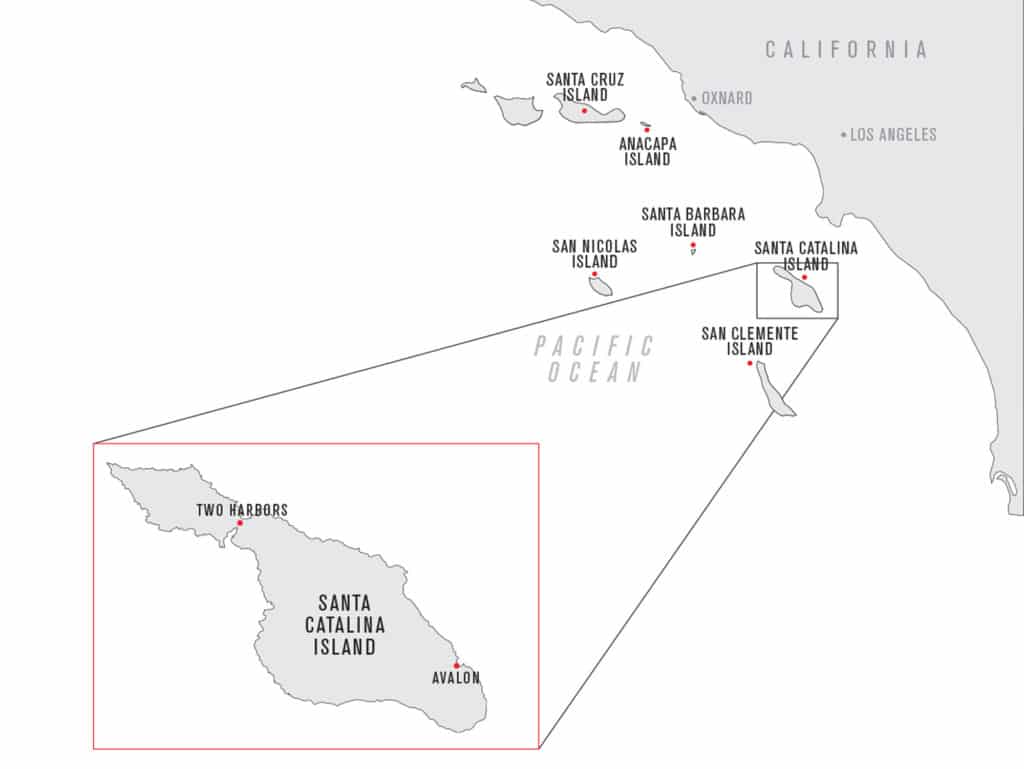
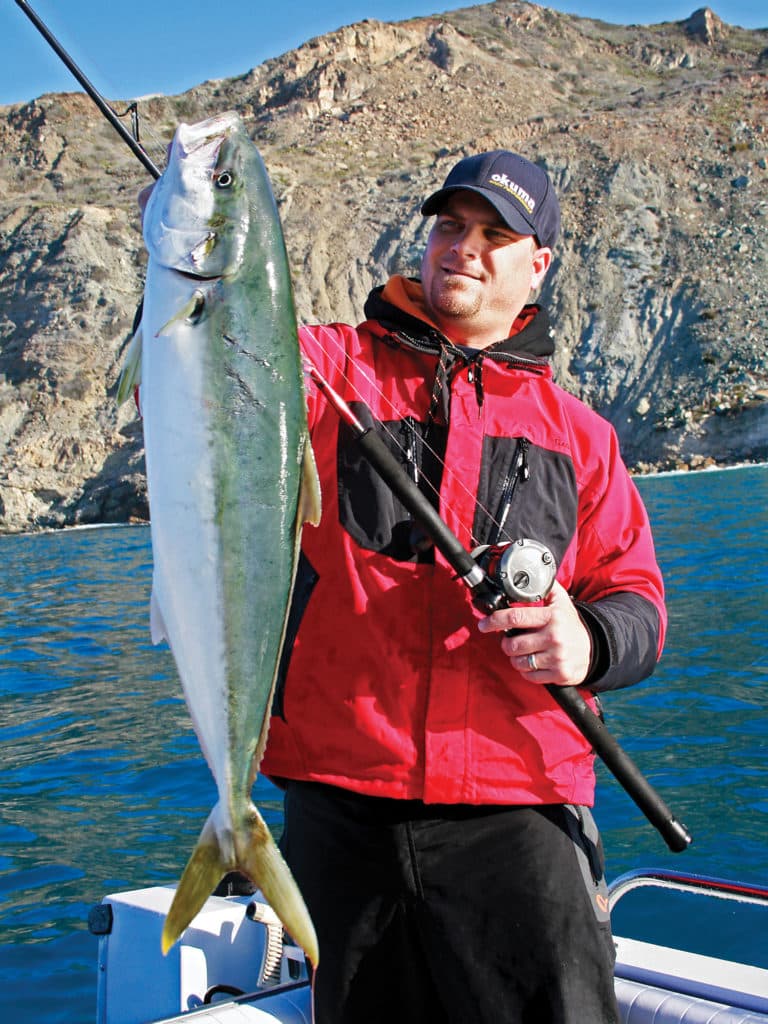
Chumming for Yellowtail
Whether you’re slow-trolling, drifting or anchored, a steady chum line attracts yellowtail. Most private boaters can’t carry enough live bait to chum with, but fresh chunks of sardines or mackerel often prove just as effective. Carry a 5-gallon bucket or two full of chunks to chum, in addition to loading the bait tank with live baits.
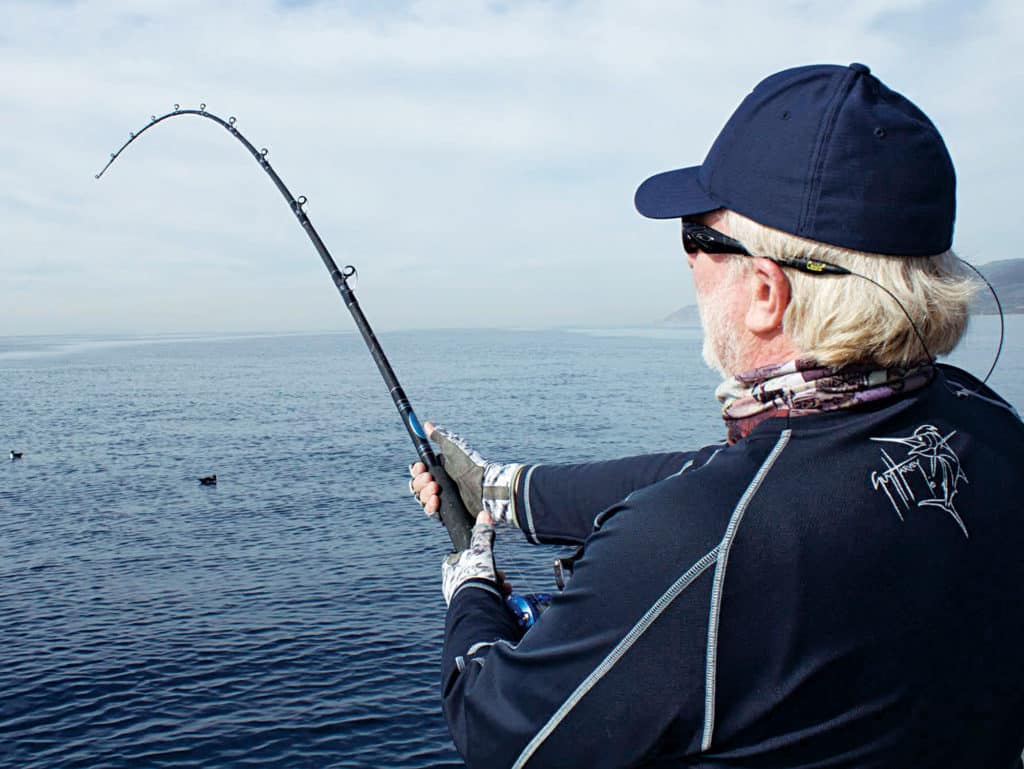
Designate a crew member to cut sugar-cube-size chunks and keep them streaming behind the boat. Start with a handful, then toss one at a time as the previous chunk disappears into the depths. And toss out one or two live baits after every 15 or 20 chunks. Chumming is a great way to catch California yellowtail.
By scanning the water behind the boat, you can sometimes eyeball yellowtail coming in close to inhale chunks. Get a hooked bait in front of one of these brazen yellowtails as quickly as possible. When yellowtail crash bait near the surface, it’s time to fish surface irons, such as the Tady 45 surface iron and the Salas 7X Light surface jig, which are relatively lightweight and swim with an enticing side-to-side action on a medium retrieve.
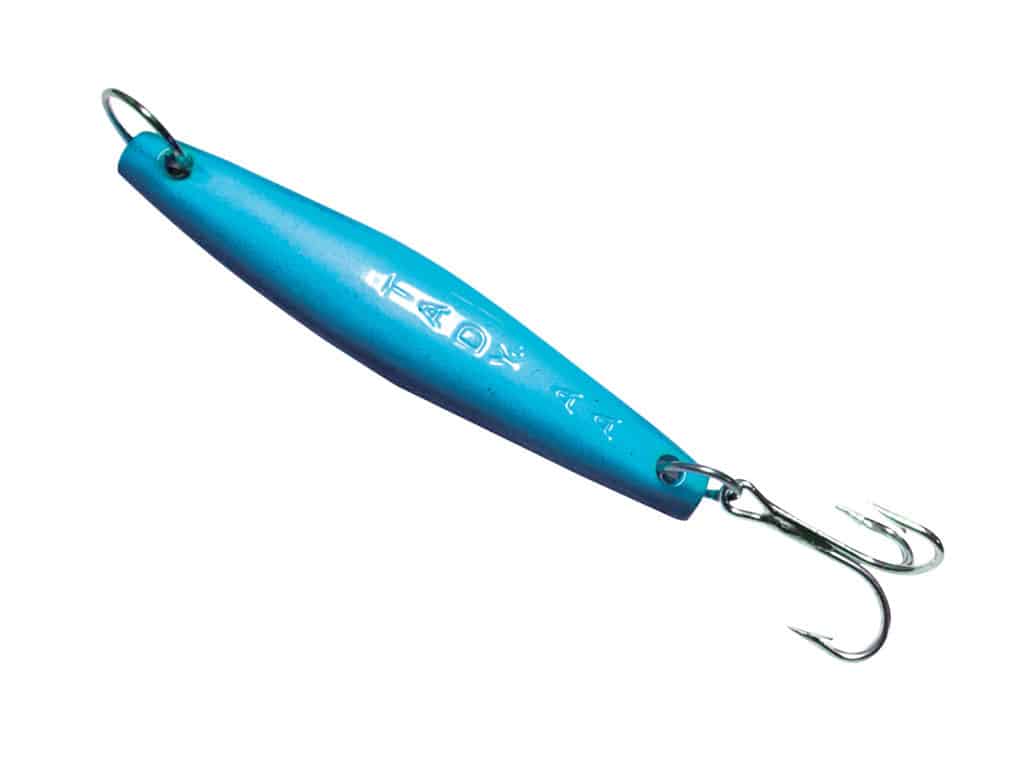
Two of the best colors for yellowtail are blue-and-white and mint green-and-white. Long casts are sometimes necessary to reach boiling fish (yellowtail feeding at the surface), so accomplished jig anglers use 8- to 10-foot rods and conventional casting reels for extra distance.
Trolling for California Yellowtail
Trolling live sardines or mackerel at idle speed along the shoreline proves effective, particularly if you stagger the baits throughout the water column and chum behind the boat. No doubt, these are some of the best baits for California yellowtail.
Use these rigs when trolling for yellowtail: I put two or three baits 100 to 150 feet behind the boat: one unweighted, one with a ¾- to 1-ounce egg sinker, and a third with a 2- to 3-ounce egg sinker. Use an in-line barrel swivel to hold the weight some 3 to 4 feet above the hook on a 25- to 40-pound fluorocarbon leader. Run the weighted lines outboard and the unweighted down the center to minimize tangles.
When fishing with sardines or small mackerel, use a 3/0 Owner Gorilla Light J hook pinned through the roof of the mouth and out the top of the nose. This prevents turned hooks better than hooking the bait crosswise through the nose. For larger mackerel, use the same hook, but bridle the bait with a black rubber band through the nose. When a breeze or current sweeps along the shore, switch to drifting live bait while chumming.
Fish the Bottom for Yellowtails
When yellowtail hang near the bottom, a dropper-loop rig fished while either drifting or anchored works best. A 6- to 12-ounce bank or torpedo sinker keeps the line vertical, which is important when the current pushes your line or a breeze speeds up the drift. When targeting yellowtail with this rig, avoid fishing too close to the bottom, especially over structure, because you are likely to inadvertently catch lingcod or rockfish. It’s best to reel the sinker six to eight cranks off the bottom. Yellowtail have no problem swimming up 10 to 15 feet to gobble a tempting live bait.
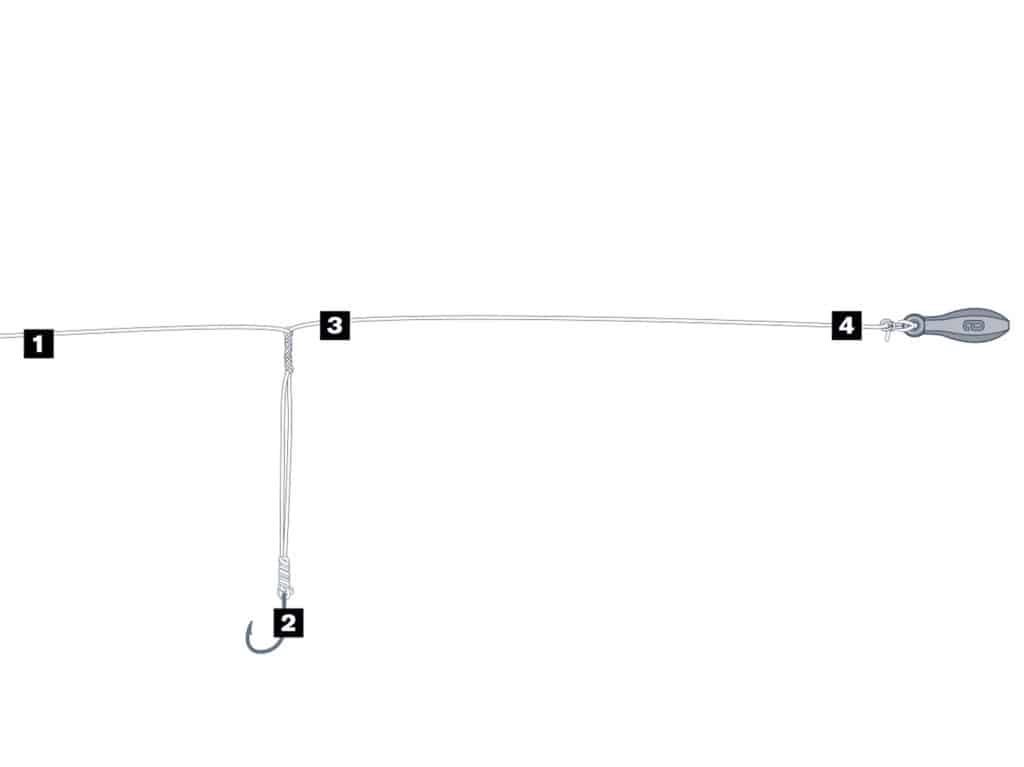
Jig fishing also works well on deep-holding yellowtail. Tie a heavy metal jig, such as a Salas 6X or Tady 9/0, drop it to the bottom, and reel it back as fast as you can. In California, this yellowtail technique is referred to as yo-yo fishing. Repeat the process if you don’t get a take. Yellowtail often chase the lure up but grab it as it falls. Whether fishing metal jigs or live bait, getting a solid hookset proves critical. Avoid swinging the rod to set the hook. Instead wind until the rod doubles over and you can no longer gain line, then raise the rod tip and begin the fight.
Trolling Plugs for California Yellowtail
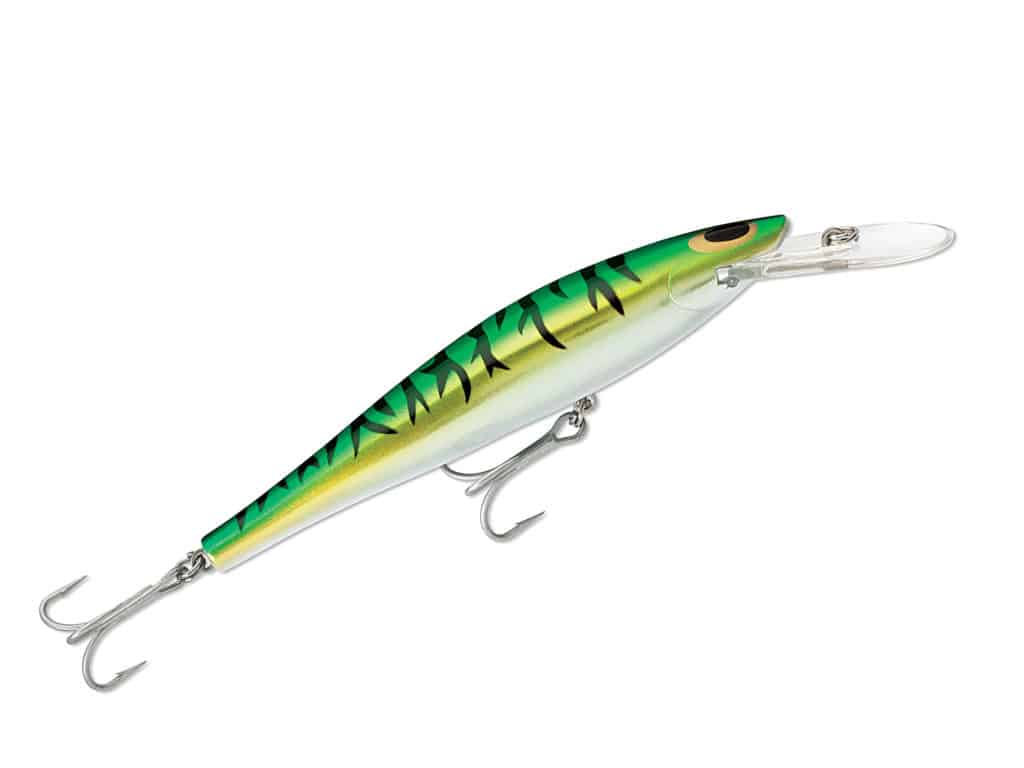
When the yellowtail are scattered, the best strategy is to fast-troll lipped plugs, such as a Rapala X-Rap Magnum 30, Williamson Speed Pro Deep 180D or 7¼-inch Yo-Zuri Sashimi 3D Magnum. Color patterns mimicking mackerel and sardines, as well as purple-and-black, do best.
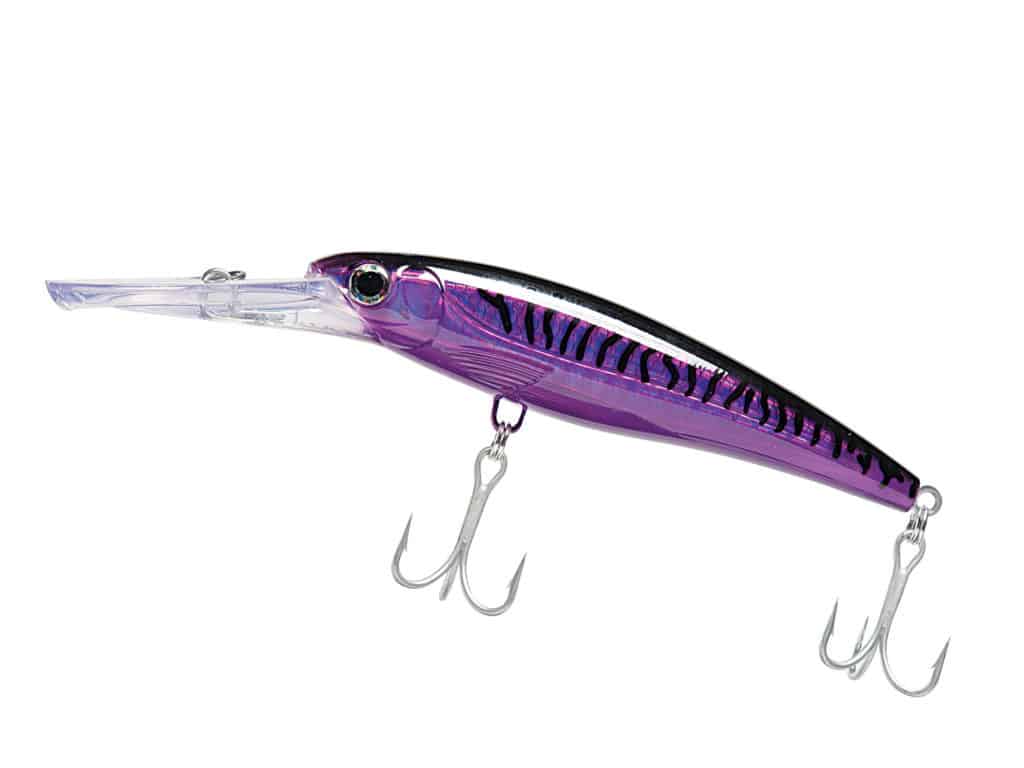
I like to troll two plugs at 6 to 8 knots along the shoreline in 30- to 100-foot depths while scouting for birds, and signs of bait and fish on the sonar. I also use side-scanning sonar to look for bait out to 180 feet on either side of the boat. When we hook a fish, we circle back to slow-troll or drift the same area with live bait, as it’s common to find more where you hooked the first fish.
Tackle for California Yellowtail
Rods: 7- to 8-foot conventional rods rated for 25- to 40-pound line
Reels: Two-speed lever-drag matched to rod
Line: 50- to 65-pound braid
Rigs: Rigs: Top shot of 25- to 40-pound fluorocarbon tied straight to the hook for fly-lining live baits; Carolina-style rig with 3 feet of 30-pound fluorocarbon leader and an egg sinker above a barrel swivel; dropper-loop rig on 30- to 40-pound fluorocarbon with an 18-inch dropper for the hook created with a spider hitch, and a 3-foot tag end to attach a 6- to 12-ounce bank sinker.
Hooks: 3/0 to 4/0 Owner Gorilla Light hooks
